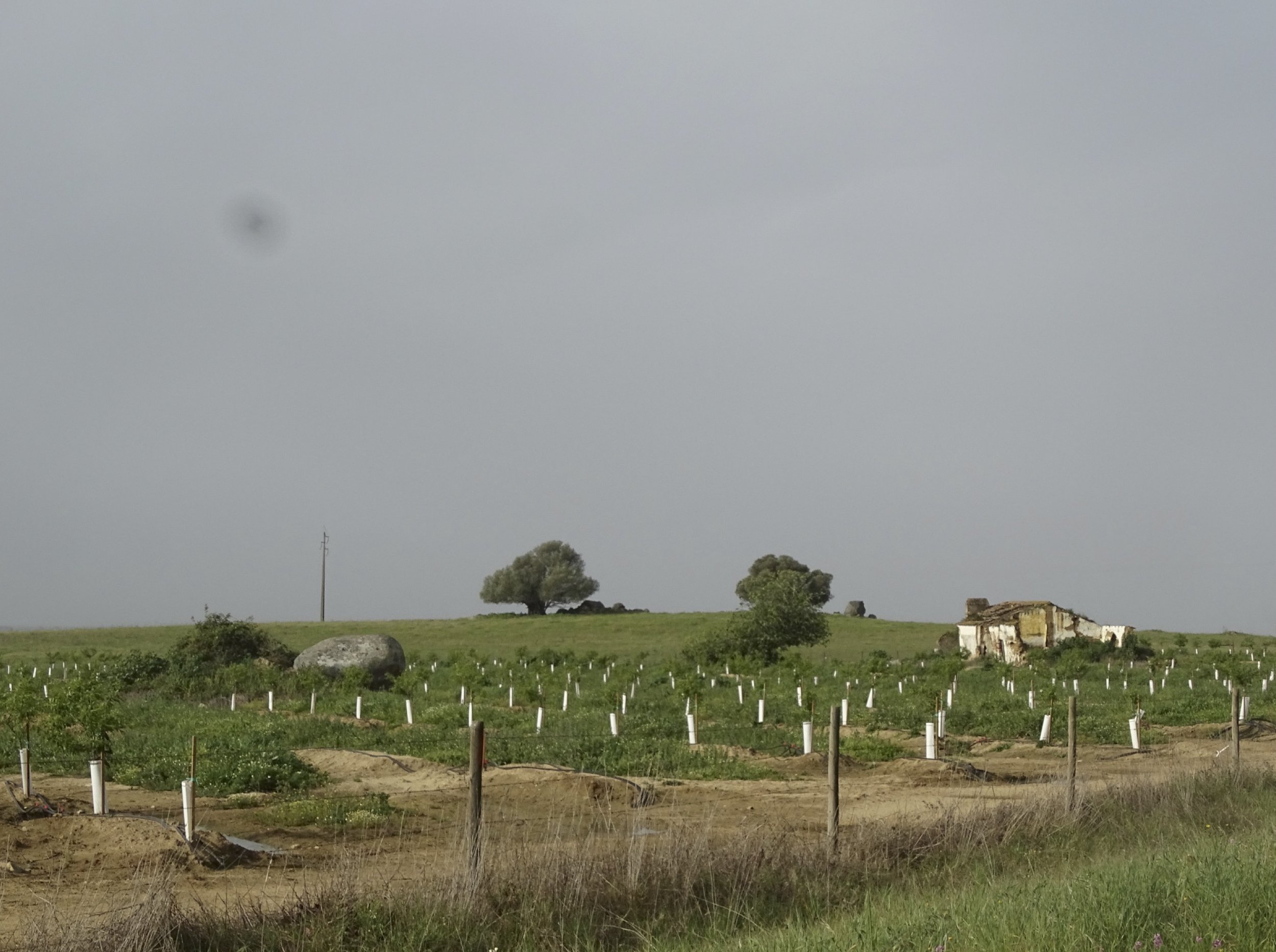
A Picture is Worth a Thousand Words
When looking at this photo of the landscape in this semi-arid region, I simultaneously see various historical layers of the Southern Alentejo region.
The boulder was deposited during one of the last ice ages. In the Neolithicum these boulders were often used to make graveyards, dolmens, holy and astronomical sites which marked the settlement of the first agriculturalists in Europe.
The oak trees in the background are a reminder of the montado landscape that the Romans introduced here, which produced acorns for pigs, fodder for animals, and meat for people, which sustained a large and extensive land ownership from Roman until present times.
The little dilapidated cottage might have been for agricultural workers or herders, but has clearly been abandoned as migration abroad and to the urban coastline increased. During the Twentieth Century this rural region became electrified, but the post has since been replaced and abandoned again in the Twenty-First Century.
The landscape is now quickly transforming once more, as the massive Alqueva dam (2002) introduced pressurised irrigation for huge plantations of olive and almond trees for the European market. International companies have introduced monocultures of high yielding treelings that are planted in plastic cases to ensure their growth. The War in Ukraine and the rising prices for olive oil and almonds further reinforce this agricultural scaling.